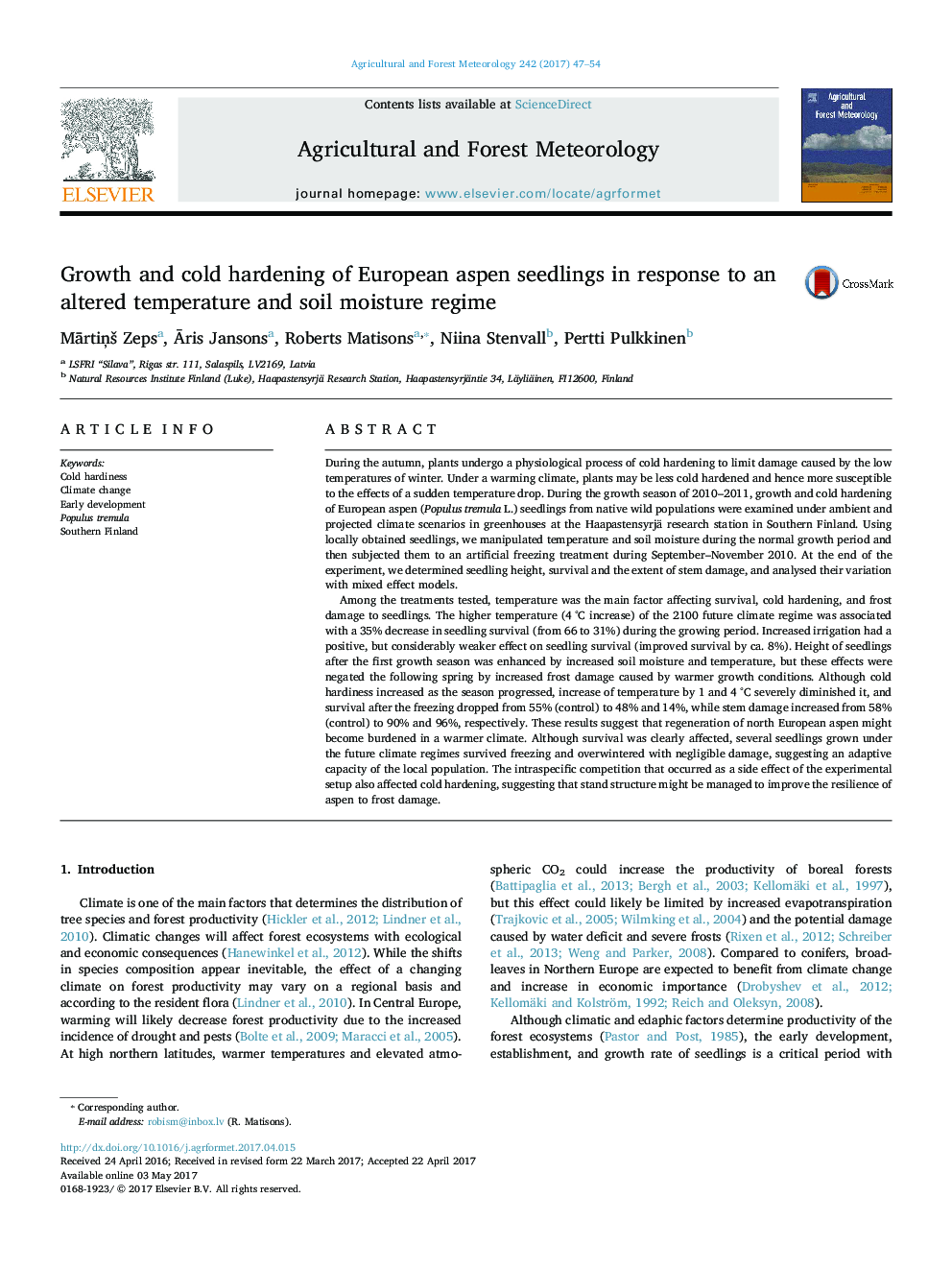| کد مقاله | کد نشریه | سال انتشار | مقاله انگلیسی | نسخه تمام متن |
|---|---|---|---|---|
| 6457866 | 1420858 | 2017 | 8 صفحه PDF | دانلود رایگان |
- Growth and cold hardening of European aspen seedlings from the boreal zone were studied.
- Projected future climate conditions were modelled in a greenhouse experiment.
- Increased temperature and moisture facilitated seedling growth.
- Temperature was the main factor affecting seedling survival.
- Seedlings were not able to cold harden sufficiently under a 4 °C increase.
During the autumn, plants undergo a physiological process of cold hardening to limit damage caused by the low temperatures of winter. Under a warming climate, plants may be less cold hardened and hence more susceptible to the effects of a sudden temperature drop. During the growth season of 2010-2011, growth and cold hardening of European aspen (Populus tremula L.) seedlings from native wild populations were examined under ambient and projected climate scenarios in greenhouses at the Haapastensyrjä research station in Southern Finland. Using locally obtained seedlings, we manipulated temperature and soil moisture during the normal growth period and then subjected them to an artificial freezing treatment during September-November 2010. At the end of the experiment, we determined seedling height, survival and the extent of stem damage, and analysed their variation with mixed effect models.Among the treatments tested, temperature was the main factor affecting survival, cold hardening, and frost damage to seedlings. The higher temperature (4 °C increase) of the 2100 future climate regime was associated with a 35% decrease in seedling survival (from 66 to 31%) during the growing period. Increased irrigation had a positive, but considerably weaker effect on seedling survival (improved survival by ca. 8%). Height of seedlings after the first growth season was enhanced by increased soil moisture and temperature, but these effects were negated the following spring by increased frost damage caused by warmer growth conditions. Although cold hardiness increased as the season progressed, increase of temperature by 1 and 4 °C severely diminished it, and survival after the freezing dropped from 55% (control) to 48% and 14%, while stem damage increased from 58% (control) to 90% and 96%, respectively. These results suggest that regeneration of north European aspen might become burdened in a warmer climate. Although survival was clearly affected, several seedlings grown under the future climate regimes survived freezing and overwintered with negligible damage, suggesting an adaptive capacity of the local population. The intraspecific competition that occurred as a side effect of the experimental setup also affected cold hardening, suggesting that stand structure might be managed to improve the resilience of aspen to frost damage.
Journal: Agricultural and Forest Meteorology - Volume 242, 15 August 2017, Pages 47-54
